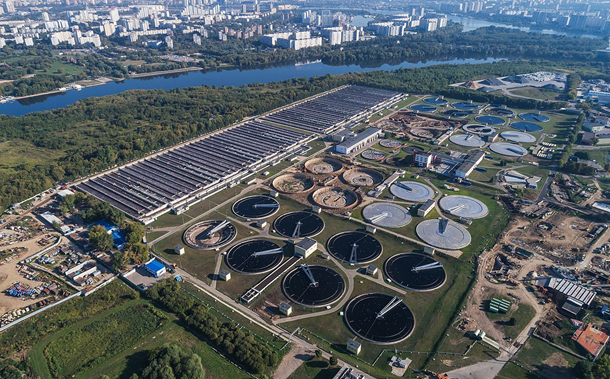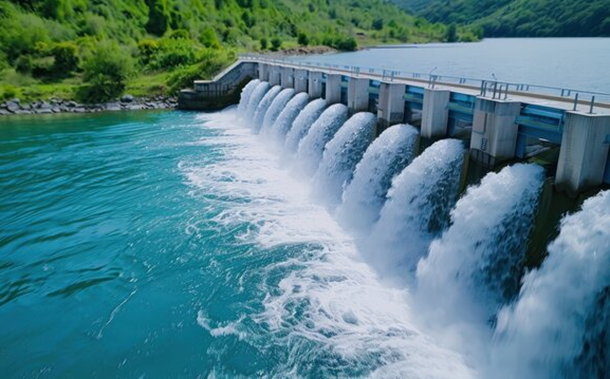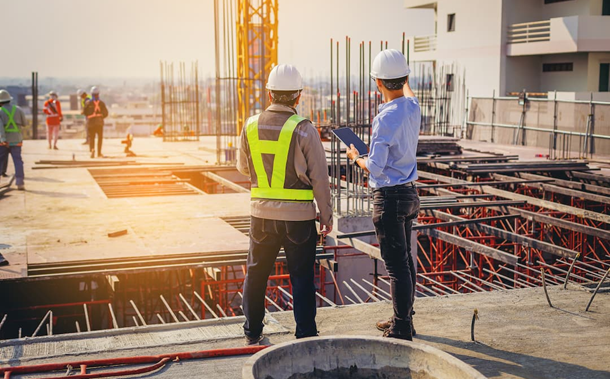Influence of Gypsum on the Residual Properties of Fly Ash-Slag-Based Alkali-Activated Concrete
Downloads
Doi:10.28991/CEJ-2024-010-03-017
Full Text:PDF
Downloads
[2] Plaza, M. G., Martínez, S., & Rubiera, F. (2020). Co2 capture, use, and storage in the cement industry: State of the art and expectations. Energies, 13(21). doi:10.3390/en13215692.
[3] Farooq, F., Jin, X., Faisal Javed, M., Akbar, A., Izhar Shah, M., Aslam, F., & Alyousef, R. (2021). Geopolymer concrete as sustainable material: A state of the art review. Construction and Building Materials, 306. doi:10.1016/j.conbuildmat.2021.124762.
[4] Provis, J. L., Palomo, A., & Shi, C. (2015). Advances in understanding alkali-activated materials. Cement and Concrete Research, 78, 110–125. doi:10.1016/j.cemconres.2015.04.013.
[5] Rastogi, A., & Paul, V. K. (2020). A critical review of the potential for fly ash utilisation in construction-specific applications in India. Environmental Research, Engineering and Management, 76(2), 65–75. doi:10.5755/J01.EREM.76.2.25166.
[6] Zhuang, X. Y., Chen, L., Komarneni, S., Zhou, C. H., Tong, D. S., Yang, H. M., Yu, W. H., & Wang, H. (2016). Fly ash-based geopolymer: Clean production, properties and applications. Journal of Cleaner Production, 125, 253–267. doi:10.1016/j.jclepro.2016.03.019.
[7] Pradhan, P., Dwibedy, S., Pradhan, M., Panda, S., & Panigrahi, S. K. (2022). Durability characteristics of geopolymer concrete - Progress and perspectives. Journal of Building Engineering, 59. doi:10.1016/j.jobe.2022.105100.
[8] Singh, B., Ishwarya, G., Gupta, M., & Bhattacharyya, S. K. (2015). Geopolymer concrete: A review of some recent developments. Construction and Building Materials, 85, 78–90. doi:10.1016/j.conbuildmat.2015.03.036.
[9] Mehta, A., Siddique, R., Ozbakkaloglu, T., Uddin Ahmed Shaikh, F., & Belarbi, R. (2020). Fly ash and ground granulated blast furnace slag-based alkali-activated concrete: Mechanical, transport and microstructural properties. Construction and Building Materials, 257. doi:10.1016/j.conbuildmat.2020.119548.
[10] Kamath, M., Prashant, S., & Kumar, M. (2021). Micro-characterisation of alkali activated paste with fly ash-GGBS-metakaolin binder system with ambient setting characteristics. Construction and Building Materials, 277. doi:10.1016/j.conbuildmat.2021.122323.
[11] Lecomte, I., Henrist, C., Liégeois, M., Maseri, F., Rulmont, A., & Cloots, R. (2006). (Micro)-structural comparison between geopolymers, alkali-activated slag cement and Portland cement. Journal of the European Ceramic Society, 26(16), 3789–3797. doi:10.1016/j.jeurceramsoc.2005.12.021.
[12] Wang, X. Y., & Lee, H. S. (2010). Modeling the hydration of concrete incorporating fly ash or slag. Cement and Concrete Research, 40(7), 984–996. doi:10.1016/j.cemconres.2010.03.001.
[13] Castellote, M., Alonso, C., Andrade, C., Castro, P., & Echeverría, M. (2001). Calorimetric study of alkaline activation of calcium hydroxide-metakaolin solid mixtures. Cement and Concrete Research, 31(2), 25–30. doi:10.1016/S0008-8846(00)00435-X.
[14] Ruiz-Santaquiteria, C., Fernández-Jiménez, A., & Palomo, A. (2016). Alternative prime materials for developing new cements: Alkaline activation of alkali aluminosilicate glasses. Ceramics International, 42(8), 9333–9340. doi:10.1016/j.ceramint.2016.03.111.
[15] Garcia-Lodeiro, I., Palomo, A., Fernández-Jiménez, A., & MacPhee, D. E. (2011). Compatibility studies between N-A-S-H and C-A-S-H gels. Study in the ternary diagram Na2O-CaO-Al2O3-SiO 2-H2O. Cement and Concrete Research, 41(9), 923–931. doi:10.1016/j.cemconres.2011.05.006.
[16] Chang, J. J., Yeih, W., & Hung, C. C. (2005). Effects of gypsum and phosphoric acid on the properties of sodium silicate-based alkali-activated slag pastes. Cement and Concrete Composites, 27(1), 85–91. doi:10.1016/j.cemconcomp.2003.12.001.
[17] Son, H., Park, S. M., Seo, J. H., & Lee, H. K. (2019). Effect of CaSO4 incorporation on pore structure and drying shrinkage of alkali-activated binders. Materials, 12(10). doi:10.3390/MA12101673.
[18] Hanjitsuwan, S., Injorhor, B., Phoo-ngernkham, T., Damrongwiriyanupap, N., Li, L. Y., Sukontasukkul, P., & Chindaprasirt, P. (2020). Drying shrinkage, strength and microstructure of alkali-activated high-calcium fly ash using FGD-gypsum and dolomite as expansive additive. Cement and Concrete Composites, 114. doi:10.1016/j.cemconcomp.2020.103760.
[19] Ghosh, A., & Subbarao, C. (2001). Microstructural Development in Fly Ash Modified with Lime and Gypsum. Journal of Materials in Civil Engineering, 13(1), 65–70. doi:10.1061/(asce)0899-1561(2001)13:1(65).
[20] Jeong, Y., Park, H., Jun, Y., Jeong, J. H., & Oh, J. E. (2016). Influence of slag characteristics on strength development and reaction products in a CaO-activated slag system. Cement and Concrete Composites, 72, 155–167. doi:10.1016/j.cemconcomp.2016.06.005.
[21] Yoon, S., Park, H., Yum, W. S., Suh, J. Il, & Oh, J. E. (2018). Influence of calcium sulfate type on evolution of reaction products and strength in NaOH- and CaO-activated ground granulated blast-furnace slag. Applied Sciences, 8(12), 2500. doi:10.3390/app8122500.
[22] Wang, D., Wang, Q., & Huang, Z. (2020). New insights into the early reaction of NaOH-activated slag in the presence of CaSO4. Composites Part B: Engineering, 198. doi:10.1016/j.compositesb.2020.108207.
[23] An, Q., Pan, H., Zhao, Q., Du, S., & Wang, D. (2022). Strength development and microstructure of recycled gypsum-soda residue-GGBS based geopolymer. Construction and Building Materials, 331. doi:10.1016/j.conbuildmat.2022.127312.
[24] Hamdan, A., Song, H., Yao, Z., Alnahhal, M. F., Kim, T., & Hajimohammadi, A. (2023). Modifications to reaction mechanisms, phase assemblages and mechanical properties of alkali-activated slags induced by gypsum addition. Cement and Concrete Research, 174. doi:10.1016/j.cemconres.2023.107311.
[25] Cong, P., & Mei, L. (2021). Using silica fume for improvement of fly ash/slag based geopolymer activated with calcium carbide residue and gypsum. Construction and Building Materials, 275. doi:10.1016/j.conbuildmat.2020.122171.
[26] Feng, Y., Xue, Z., Zhang, B., Xie, J., Chen, C., Tan, J., & Zhao, C. (2023). Effects of phosphogypsum substitution on the performance of ground granulated blast furnace slag/fly ash-based alkali-activated binders. Journal of Building Engineering, 70. doi:10.1016/j.jobe.2023.106387.
[27] Wang, Y., Huo, H., Chen, B., & Cui, Q. (2023). Development and optimization of phosphogypsum-based geopolymer cement. Construction and Building Materials, 369. doi:10.1016/j.conbuildmat.2023.130577.
[28] Luan, Y., Wang, J., Ma, T., Wang, S., & Li, C. (2023). Modification mechanism of flue gas desulfurization gypsum on fly ash and ground granulated blast-furnace slag alkali-activated materials: Promoting green cementitious material. Construction and Building Materials, 396. doi:10.1016/j.conbuildmat.2023.132400.
[29] Tu, W., & Zhang, M. (2023). Behaviour of alkali-activated concrete at elevated temperatures: A critical review. Cement and Concrete Composites, 138. doi:10.1016/j.cemconcomp.2023.104961.
[30] Luo, Y., Li, S. H., Klima, K. M., Brouwers, H. J. H., & Yu, Q. (2022). Degradation mechanism of hybrid fly ash/slag based geopolymers exposed to elevated temperatures. Cement and Concrete Research, 151. doi:10.1016/j.cemconres.2021.106649.
[31] Reddy, M. S., Dinakar, P., & Rao, B. H. (2018). Mix design development of fly ash and ground granulated blast furnace slag based geopolymer concrete. Journal of Building Engineering, 20, 712–722. doi:10.1016/j.jobe.2018.09.010.
[32] Rashad, A. M. (2015). Potential use of phosphogypsum in alkali-activated fly ash under the effects of elevated temperatures and thermal shock cycles. Journal of Cleaner Production, 87(1), 717–725. doi:10.1016/j.jclepro.2014.09.080.
[33] Wang, J., Ma, T., Luan, Y., Wang, S., & Zhang, Y. (2023). Investigation on the effects of desulfurization gypsum on the engineering properties of ternary geopolymers: Improving the utilization of industrial wastes. Journal of Cleaner Production, 414. doi:10.1016/j.jclepro.2023.137638.
[34] Li, Y., Liu, X., Li, Z., Ren, Y., Wang, Y., & Zhang, W. (2021). Preparation, characterization and application of red mud, fly ash and desulfurized gypsum based eco-friendly road base materials. Journal of Cleaner Production, 284. doi:10.1016/j.jclepro.2020.124777.
[35] Thokchom, S., Mandal, K. K., & Ghosh, S. (2012). Effect of Si/Al Ratio on Performance of Fly Ash Geopolymers at Elevated Temperature. Arabian Journal for Science and Engineering, 37(4), 977–989. doi:10.1007/s13369-012-0230-5.
[36] Lahoti, M., Wong, K. K., Yang, E. H., & Tan, K. H. (2018). Effects of Si/Al molar ratio on strength endurance and volume stability of metakaolin geopolymers subject to elevated temperature. Ceramics International, 44(5), 5726–5734. doi:10.1016/j.ceramint.2017.12.226.
[37] He, R., Dai, N., & Wang, Z. (2020). Thermal and Mechanical Properties of Geopolymers Exposed to High Temperature: A Literature Review. Advances in Civil Engineering, 2020. doi:10.1155/2020/7532703.
- Authors retain all copyrights. It is noticeable that authors will not be forced to sign any copyright transfer agreements.
- This work (including HTML and PDF Files) is licensed under a Creative Commons Attribution 4.0 International License.![]()














